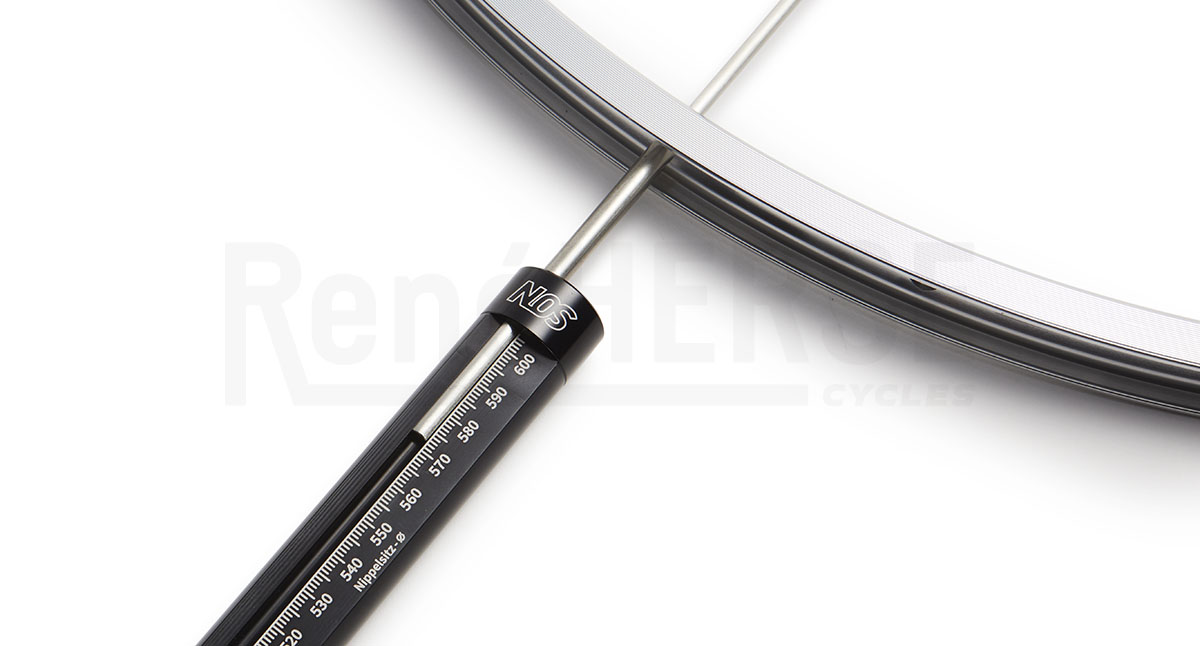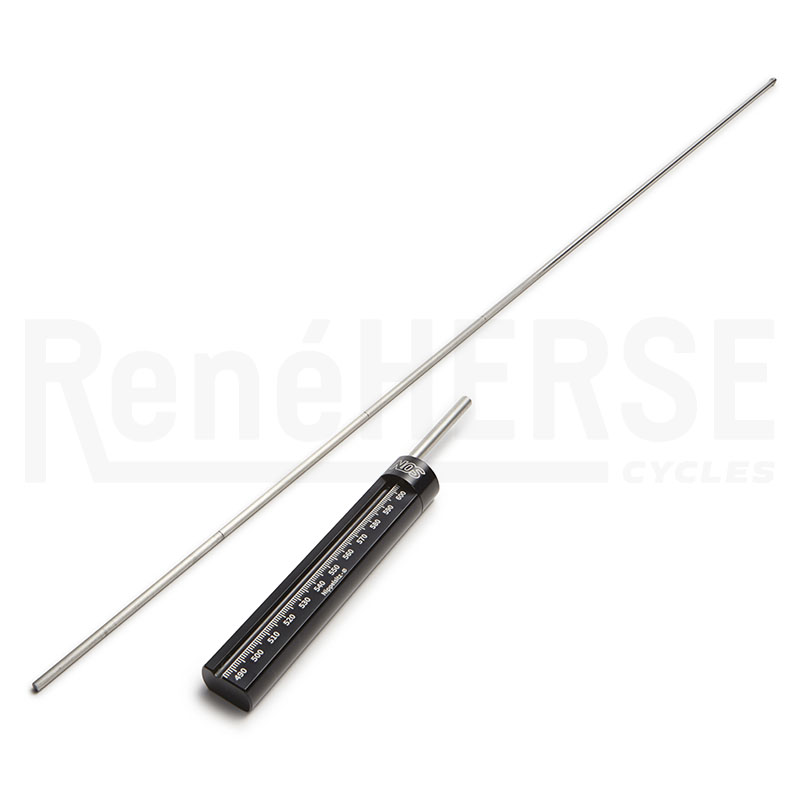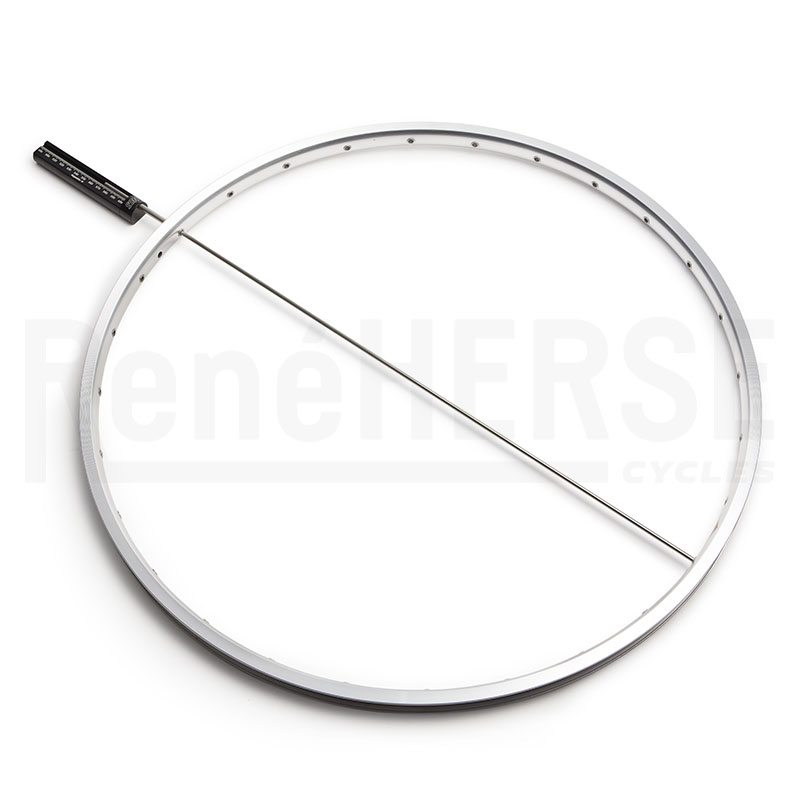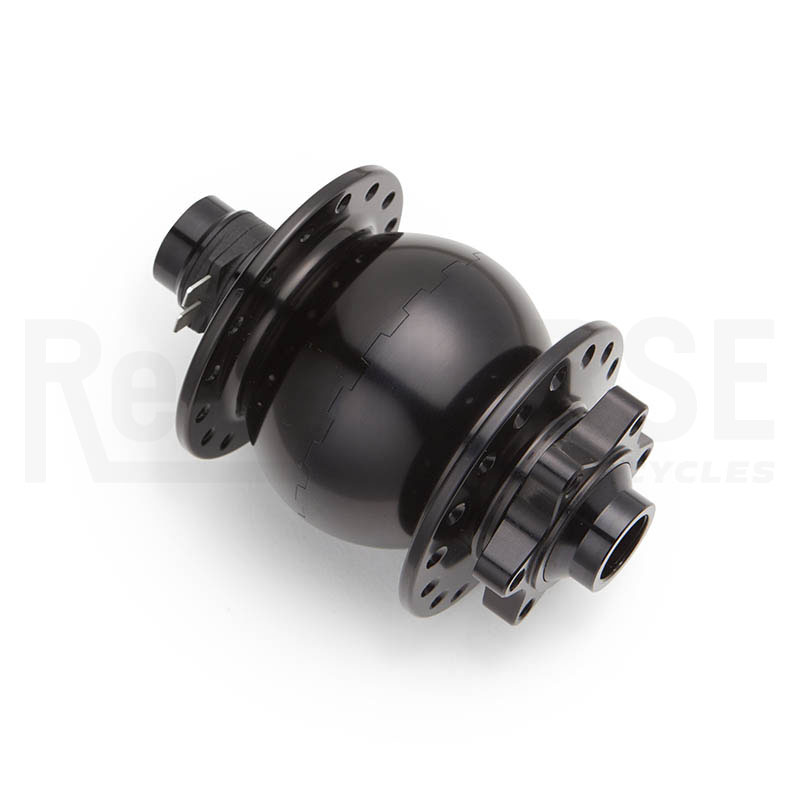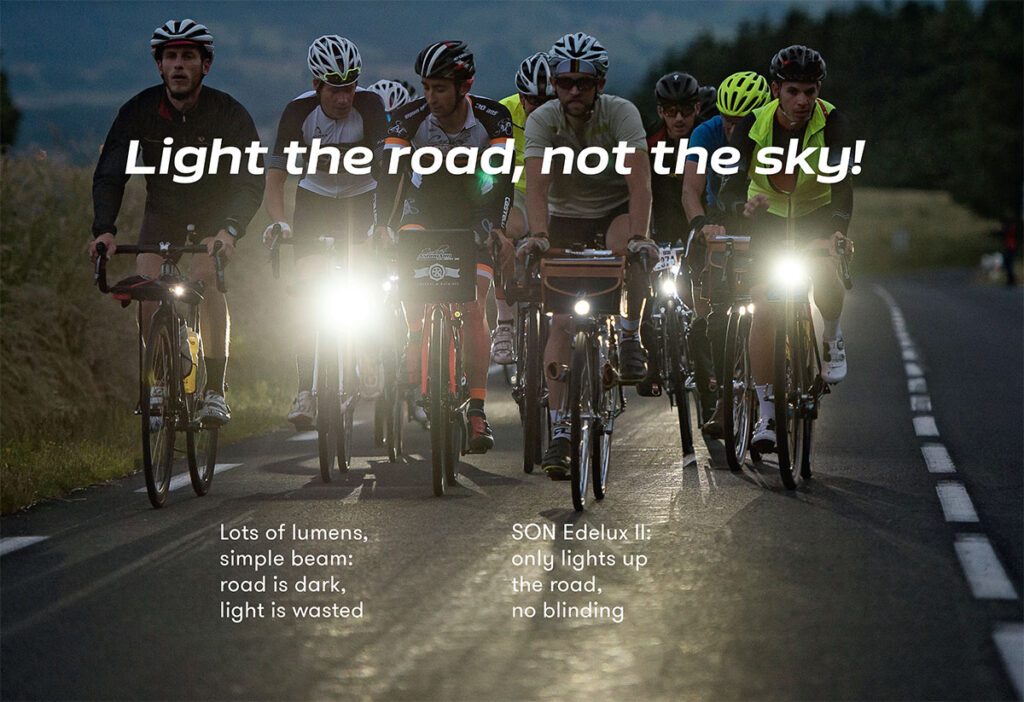Rim ERD Gauge and Other News from SON
We just received a shipment from Schmidt in Germany. That means generator hubs and lights are back in stock, plus other useful parts.
One of the most interesting tools in recent years is SON’s new gauge to measure the Effective Rim Diameter (ERD). For people who build their own wheels, nothing is more frustrating than lacing a wheel and tensioning it, only to find that the spokes are too short or too long. You have to unlace the wheel, buy new spokes, and start over—plus you’ve spent money on spokes you don’t need.
To calculate the correct spoke lengths, it’s essential to know the Effective Rim Diameter (ERD) as well as various dimensions of the hub. Unfortunately, manufacturers’ specs are not always reliable and should be double-checked. The hub’s dimensions can be measured with calipers, but the rim diameter is more difficult to establish. There are different methods of measuring ERD, using spokes and a tape measure or a ruler, but it can be tricky to obtain the required accuracy.
The SON Rim ERD Gauge makes this easy and quick: Simply insert the long rod into one spoke hole and through the opposite spoke hole until it bottoms out. (One end is shaped like a spoke nipple.) Slide the gauge onto the rod and read off the ERD. The tool also works for small rims: Markings on the rod make it easy to subtract 10, 20 or 30 cm from the measurement to obtain the correct ERD.
When using online spoke length calculators, it’s important to know that some define ERD as the actual measurement, while others require adding 1-2 mm for the thickness of the nipple head. Similarly, some rim makers list ‘virtual’ ERD specs that include the nipple head, while others list the actual measurements. When in doubt, use SON Spoke Length Calculator, and the actual measurement of the rim. (The Rene Herse website lists the actual ERD of the rims we sell.)
Also new is the SON 28 12 Thru-Axle hub for 110 mm Boost forks. It’s a useful hub for many gravel and even some mountain bikes that run 12 mm thru-axles and 110 mm front spacing. The SON 28 provides a little more light output at lower speeds than the SON Delux, which is useful for bikes that are ridden on rough terrain. The downside is a little more resistance, but the SON 28 is still one of the lightest-rolling generator hubs available today. We’ve got these new SON hubs in stock with 24, 28 and 32 holes.
Like all SON hubs, the SON 28 has a clever pressure compensating system to prevent moisture getting sucked into the bearings. Why is that necessary? Generator hubs have a large volume of air inside, because they are relatively large. When the hub gets colder—when you take your bike outside to start riding on a cold day—that air contracts, creating low pressure that pulls more air into the hub. On a standard hub, the only way inside is through the bearings. And since air contains moisture, you are sucking water into the bearings. Not ideal, and the main reason why other generator hubs have a limited lifespan. (With most standard hubs, there’s almost no air inside, so this isn’t an issue.)
SON developed a pressure compensating system that allows the air to go through a hole in the axle, rather than through the bearings. From there, it goes into a pressure compensation chamber. When the hub warms up, the moist air goes out again. This cycle continues each time the hub gets cold or warm, without the moisture ever making it inside the hub. This protects the bearings and the hub internals from corrosion. It’s just one of many features that make these hubs a favorite with long-distance cyclists.
We’ve also got a restock on all Edelux II headlights. The photo above shows why we love these lights. At first glance, you see two impressively bright lights. But when you look at the road surface, it’s relatively dark ahead of those bright lights. Those lights have a simple, round beam that puts most of the light in the air and into the eyes of oncoming traffic. Only a fraction of that brightness ends up on the road surface.
In the center-right, you see a bunch of riders with Edelux II lights. They don’t blind the camera, but the road surface is illuminated brightly and—just as important—evenly. That makes a huge difference when you ride at night. The shaped beam of the Edelux II makes it easy to see far ahead. It’s safer and less fatiguing. In fact, all car headlights are required to use a shaped beam like that. Why should our bikes offer less illumination?
All these products are in stock now. Some quantities—especially of the Rim ERD Gauge—are still limited, while production catches up with demand. Click on the images to find out more about these components.
Further Reading:


